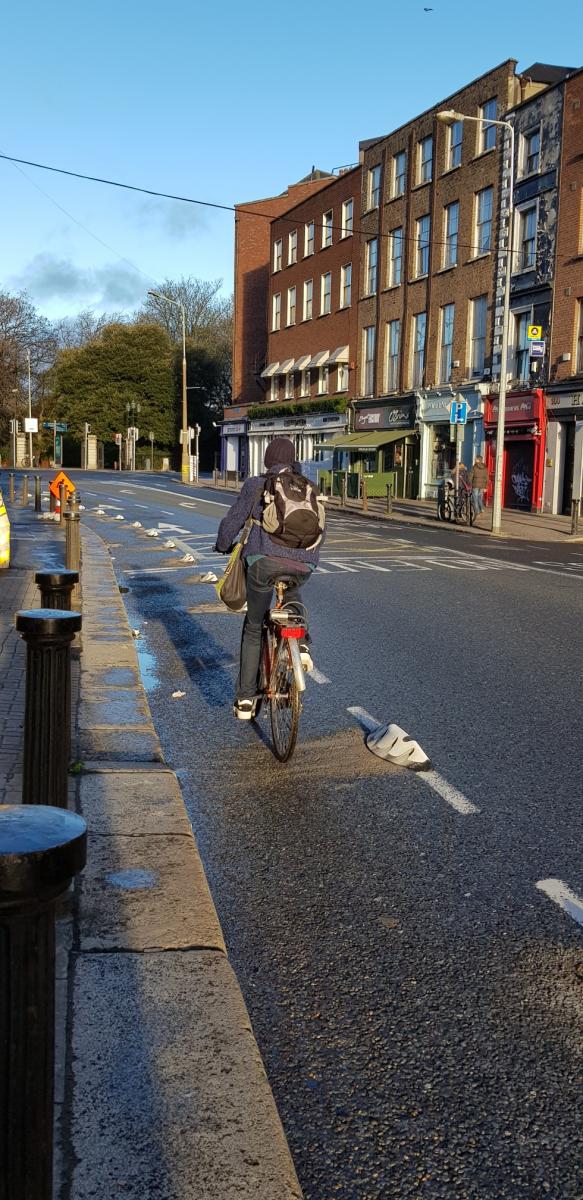
#VC19DublinCase: Dublin trials new cycle protection measures
Author: Dublin City Council
A new segregated cycle layout being trialled on Leeson Street has received positive feedback from cyclists. The cycle protection measures consist of a semi-permanent reflective protective barrier and bollard which sits directly over existing road markings, embellishing them and reinforcing the cycle track.
The project is being trialled for a minimum of three months. The idea is to bolster the safety of cyclists as they rank second from the top of the Council’s Road User Hierarchy just below that of pedestrians. As such protecting them forms part of the City Council’s Road Safety Strategy and is recommended by the Design Manual for Urban Roads and Streets.
“Cyclists have been largely favourable to the concept and want to know when it’s being rolled out. There have been some concerns from pedestrians that the protective barrier is a trip hazard. To minimise this, we are encouraging them to get into the habit of crossing at recognised pedestrian points for their own safety. All road users have to co-exist on the roads and we all need to change our behaviour so we all can use the roads safely” says Michael O’Brien, Traffic Officer responsible for implementing the trial.
The device used in the pilot is called ORCA Kerb named after the black and white whale due to the colours they share. It has been used extensively in cities across the UK. “There was a huge push to bring in dedicated cycle ways in the UK, starting with the Olympic Games in 2012 that we have constantly monitored. We trialled different types of physical barriers and this version is the most durable” says Michael.
The ORCA Kerb has been developed to a Dublin-centric specification which the manufacturers are calling the ‘Dublin Design’. Michael explains:
“We requested more reflectivity and a new feature to include a one metre high upright flexible bollard combined into the body of the rubber unit. This reduces fixing the bollards to the road surface every few metres. It brings down the number of combined parts of kerbs and bollards from a three part installation to two. Now the bollard can be placed every 20 metres along the cycle track. We modified the unit by learning throughout the trial and in doing so it gives better visibility for motorists and buses. It is also a substantial cost saving for the Council”.
The design allows commercial traffic and vans to drive through and over the barriers easily in order to make their deliveries. The success of the ‘Dublin Design’ has resulted in the manufacturer investing in new moulds to reproduce the model for the open market. Following a review of the trial, a position will be taken as to whether the project will be rolled out across the city.
Regions:
News category:
Network/Project Involved:
Contact the author
Recent news!
Upcoming events
Contact Us
Avenue des Arts, 7-8
Postal address: Rue de la Charité, 22
1210 Brussels, Belgium









